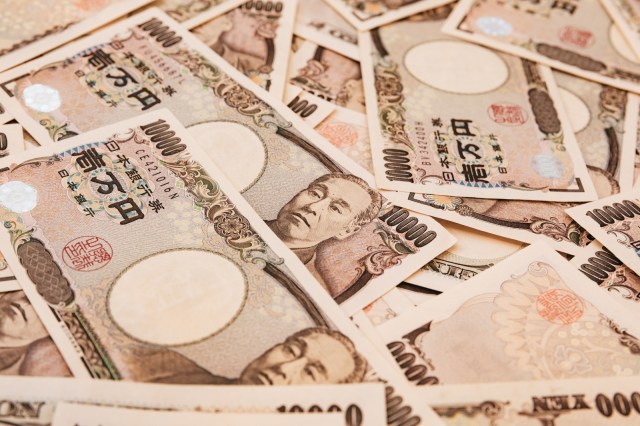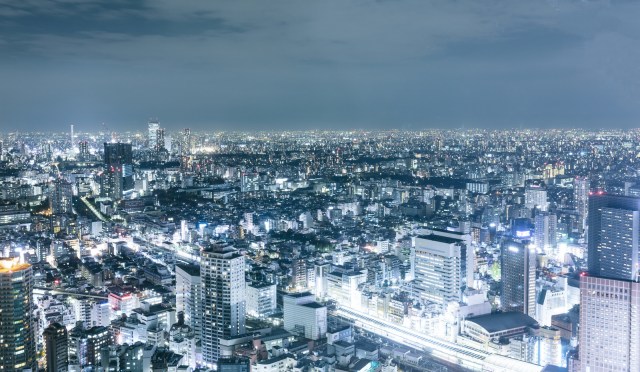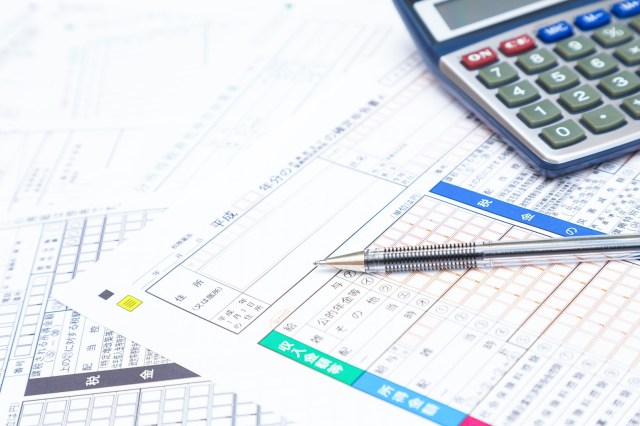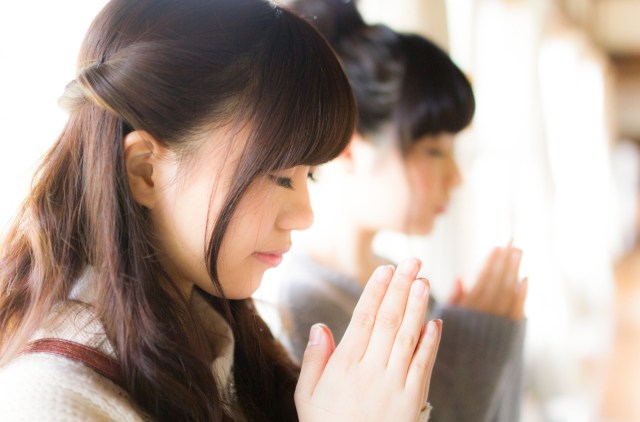
And that’s not something you can easily take a loan out for.
Raising a family is no small feat. Whether you’re a two-guardian household with one child, or a single parent household with several children, there is a variety of difficulties, both logistical and financial, that go into child-rearing and sustaining one’s livelihood.
And especially for families living in Tokyo, a recently published report has shown that the average household costs by the time parents are in their fifties is about 23.5 million yen (US$227,437).
▼ Some studies say Tokyo is the best city to live in the world,
but would that be for singles or for families?
The report was published by the Tokyo Regional Council of Trade Unions (TRCTU). This council consists of regional labor unions representing different industries of the Tokyo area, and in 2019, they conducted a survey among 3,200 individuals from a wide gamut of professional backgrounds. Among these 3,200 individuals, 739 had children in their households, and the TRCTU closely examined the financial situation of these 739 households.
Despite these households having at least one member working as a full-time, permanent employee, the TRCTU found that household costs were greatly increasing over the years. In the report, the council used the following family’s monthly budget as a model for their calculations. As reference, the family consists of two parents and two children who live in uptown Tokyo, specifically Nerima Ward, and their monthly budget was broken down into the following:
- Rent for an apartment: 95,000 yen (43 square meters or 463 square feet)
- Food expenses: 110,000 yen (300 yen per every meal per person with 3,500 yen set aside for the obligatory work party)
- One monthly family outing: 8,000 yen
- School tuition fees and other related costs: about 28,000 yen
▼ Whenever my mother asks me where her grandchildren are,
my only answer is: “In this economy???”
Adding up those numbers and including taxes as well as insurance, the model family’s monthly cost comes out to around 540,000 yen (US$5,226), which is about 60,000 yen more than the average monthly cost for a family living in Kyoto. While the family’s monthly and yearly income wasn’t stated in the report, TRTCU did more number crunching and the results weren’t pretty.
For the parents of the model household, their yearly expenses would be 6.5 million yen in their thirties, 7.4 million in their forties, and then a whooping 9.6 million yen in their golden fifties. Within the span of two decades, the annual household cost would grow by 3.1 million yen and many netizens had one question in mind: why is there such a sharp bump in costs?
▼ Sweet, sweet pension, may I live long enough to collect you someday… because I’ll need the money for my kids.
TRCTU notes that the bump in costs for those in their fifties is due to the price of sending their children to university. Compared to other countries where higher education is free due to taxes, or where student loans are prevalent in the case of the USA, the average cost of attending a four-year university in Japan can range anywhere between 2.4 million yen to 5.4 million yen.
Besides whether or not the university is a public or private one, other factors that go into university expenses include yearly tuition, living costs, university exam fees, and cram school fees for passing university entrance exams.
▼ Praying I pass these exams, not to only get into a good university or a decent paying job, but so my parents don’t have to pay for those application fees again.
Frankly, every household also has their own unique circumstances that change its budgeting and spending needs. The model presented by the TRCTU is not reflective of every household in Tokyo, but the potential annual costs calculated show how financially beleaguered Tokyo families may become in the next several decades. It should also be noted that this recent report don’t necessarily reflect how the COVID-19 pandemic has affected living costs, but there’s no doubt that the financial situations of many families have only been exacerbated since April 2020.
For the time being, the TRCTU is using their report as a leverage to argue for wage increases, though systemwide reform will probably have to take place for any substantial change to occur, especially when there are companies who still issue hellish paychecks like this one here.
Source: Huffington Post Japan via Hachima Kiko
Top image: Pakutaso
Insert images: Pakutaso (1, 2, 3, 4)
● Want to hear about SoraNews24’s latest articles as soon as they’re published? Follow us on Facebook and Twitter!




 Tokyo makes high school free for all families, even the rich ones
Tokyo makes high school free for all families, even the rich ones Meiji Gakuen University gives all students a 50,000 yen grant to offset the cost of digital classes
Meiji Gakuen University gives all students a 50,000 yen grant to offset the cost of digital classes Tokyo’s latest plan to boost birth rate: Pay people 100,000 yen per baby they give birth to
Tokyo’s latest plan to boost birth rate: Pay people 100,000 yen per baby they give birth to KFC Japan opens a Christmas restaurant in Tokyo…but why???
KFC Japan opens a Christmas restaurant in Tokyo…but why??? Chinese government’s don’t-go-to-Japan warning has heartwarming non-effect on Yokohama Chinatown
Chinese government’s don’t-go-to-Japan warning has heartwarming non-effect on Yokohama Chinatown Japan’s EF English Proficiency Index rank drops for 11th straight year, hits lowest ever
Japan’s EF English Proficiency Index rank drops for 11th straight year, hits lowest ever Popular Japanese ramen restaurant Ichiran’s lucky bags are great value for money
Popular Japanese ramen restaurant Ichiran’s lucky bags are great value for money What’s in a Lawson fukubukuro lucky bag?
What’s in a Lawson fukubukuro lucky bag? Is China’s don’t-go-to-Japan warning affecting tourist crowds in Shibuya’s Don Quijote?
Is China’s don’t-go-to-Japan warning affecting tourist crowds in Shibuya’s Don Quijote? Japan considering raising international traveler departure tax even more than previously reported
Japan considering raising international traveler departure tax even more than previously reported Japan’s human washing machines will go on sale to general public, demos to be held in Tokyo
Japan’s human washing machines will go on sale to general public, demos to be held in Tokyo Japan’s Shinkansen trains are getting a Super Mario makeover【Pics】
Japan’s Shinkansen trains are getting a Super Mario makeover【Pics】 Fan parody of Ghostbusters set in Tokyo is totally “crossing the streams”【Video】
Fan parody of Ghostbusters set in Tokyo is totally “crossing the streams”【Video】 Japanese train company is letting fans buy its actual ticket gates for their homes
Japanese train company is letting fans buy its actual ticket gates for their homes Yoshinoya adds first-ever chain-wide ramen with new beef and pork-broth noodle hot pot meals
Yoshinoya adds first-ever chain-wide ramen with new beef and pork-broth noodle hot pot meals Nintendo’s Kirby now delivering orders at Kura Sushi restaurants, but not in Japan
Nintendo’s Kirby now delivering orders at Kura Sushi restaurants, but not in Japan Is China’s don’t-go-to-Japan warning affecting tourist crowd sizes in Nara?
Is China’s don’t-go-to-Japan warning affecting tourist crowd sizes in Nara? Studio Ghibli stamps lift your spirits with motivational phrases from Totoro
Studio Ghibli stamps lift your spirits with motivational phrases from Totoro New fish discovered and named “Vanderhorstia supersaiyan” for obvious reasons
New fish discovered and named “Vanderhorstia supersaiyan” for obvious reasons Japanese town suing resident for being a jerk
Japanese town suing resident for being a jerk Starbucks Japan unveils new Christmas goods and a rhinestone tumbler that costs 19,500 yen
Starbucks Japan unveils new Christmas goods and a rhinestone tumbler that costs 19,500 yen Real-world Nausicaa Ghibli anime glider completes its final flight in Japan【Video】
Real-world Nausicaa Ghibli anime glider completes its final flight in Japan【Video】 Brand-new Pokémon park opens in Japan with larger-than-life-size Lapras【Photos】
Brand-new Pokémon park opens in Japan with larger-than-life-size Lapras【Photos】 Unique inclined elevator in Japan leads to a town that inspired Studio Ghibli’s Spirited Away
Unique inclined elevator in Japan leads to a town that inspired Studio Ghibli’s Spirited Away Is China’s don’t-go-to-Japan warning affecting tourist crowds in Tokyo’s Asakusa neighborhood?
Is China’s don’t-go-to-Japan warning affecting tourist crowds in Tokyo’s Asakusa neighborhood? The 10 best day trips from downtown Tokyo【Survey】
The 10 best day trips from downtown Tokyo【Survey】 Naturally brown-haired Osaka student sues government for forcing her to dye her hair black
Naturally brown-haired Osaka student sues government for forcing her to dye her hair black Tokyo hotel lets you make your stay a Sanrio one with special My Melody and Kuromi rooms【Pics】
Tokyo hotel lets you make your stay a Sanrio one with special My Melody and Kuromi rooms【Pics】 Survey asks foreign tourists what bothered them in Japan, more than half gave same answer
Survey asks foreign tourists what bothered them in Japan, more than half gave same answer Japan’s deadliest food claims more victims, but why do people keep eating it for New Year’s?
Japan’s deadliest food claims more victims, but why do people keep eating it for New Year’s? We deeply regret going into this tunnel on our walk in the mountains of Japan
We deeply regret going into this tunnel on our walk in the mountains of Japan Studio Ghibli releases Kodama forest spirits from Princess Mononoke to light up your home
Studio Ghibli releases Kodama forest spirits from Princess Mononoke to light up your home Major Japanese hotel chain says reservations via overseas booking sites may not be valid
Major Japanese hotel chain says reservations via overseas booking sites may not be valid Put sesame oil in your coffee? Japanese maker says it’s the best way to start your day【Taste test】
Put sesame oil in your coffee? Japanese maker says it’s the best way to start your day【Taste test】 The top 10 annoying foreign tourist behaviors on trains, as chosen by Japanese people【Survey】
The top 10 annoying foreign tourist behaviors on trains, as chosen by Japanese people【Survey】 No more using real katana for tourism activities, Japan’s National Police Agency says
No more using real katana for tourism activities, Japan’s National Police Agency says J-pop mega star Ado reveals she’s been living in the U.S., may not understand language acquisition
J-pop mega star Ado reveals she’s been living in the U.S., may not understand language acquisition
Leave a Reply